The history of triathlon

- 1. The Evolution of Triathlon: A Brief History
- 2. The Introduction of Triathlon in Olympics: A Significant Milestone
- 3. Different Types of Triathlon Races: More Than Just Swim, Bike, and Run
- 4. The Physiological Aspects of Triathlon Training
- 5. The Influence of Triathlon on Global Sports Culture
1. The Evolution of Triathlon: A Brief History
The fascinating journey of triathlon begins far back in history, initially taking root as a rugged test of athleticism among the early runners, swimmers, and cyclists. The first documented triathlon events date back to the early 1970s, marking the pioneering era where this multi-sport race took its formative steps. These early humbling beginnings sowed the seeds for what we now know as the modern triathlon, a thrilling combination of swimming, cycling, and running, enticing thrill-seekers, fitness enthusiasts, and professional athletes alike. The evolution of triathlon is indeed a riveting tale of endurance and challenge, a living testament to the sports world's constant pursuit of finding novel ways to test human resilience and agility.
- First Documented Triathlon Events
The fascinating journey of the triathlon commenced with its first documented events. Though the precise origins remain a point of debate, historians widely accept that triathlon-like races have been in existence since the early 1900s. However, the modern-day triathlon as we know now got into gear in the mid-1970s, particularly in San Diego, California. It was an initiative by the San Diego Track Club to create a new training routine, diverging from the humdrum monotony of track workouts. They set up an event that entwined swimming, cycling and running - a challenging and invigorating mix that was altogether different from existing athletic races. The first official race was held in 1974 with only a handful of participants but this pioneering event set the groundwork for what would later become a globally recognized sport. Interestingly, the nascent stages of triathlon events had no fixed distances, with the parameters set randomly. As they say, from small beginnings come great things, and this was indeed the case with the first documented triathlon events. They stand as a testament to man's relentless quest for endurance, agility, and versatility, laying the framework for the rigorous sport that commands awe and admiration today.
- The Birth of the Modern Triathlon
The story of the modern triathlon traces back to the early 1970s. This challenging, three-discipline sport had its rebirth in the sunny state of California, where swimmer Jack Johnstone and runner Don Shanahan joined forces and birthed the first-ever triathlon. Organized on September 25, 1974, in San Diego's Mission Bay, the event attracted a crowd of over forty souls ready to push their limits in the realms of running, cycling, and swimming. Intriguingly, the original race structure wasn't the swim-bike-run order we recognize today. Instead, it kicked off with a 6.3-mile run, followed by a 5-mile bike ride and concluded with a 500-yard swim. Its success was a herald of triathlon’s imminent popularity. A mere four years later, in 1978, the world bore witness to the creation of the Hawaii Ironman, an endurance-testing event set to redefine the future of triathlons. Now, the modern triathlon has evolved, both in terms of its structure and recognition, serving as a significant global stage for showcasing the athletic prowess and determination of countless devoted triathletes.
2. The Introduction of Triathlon in Olympics: A Significant Milestone
The introduction of triathlon in the Olympics represents a significant milestone in the sport's history. Debuting in the Summer Olympics of 2000, the event was a triumphant exhibition of athleticism that truly tested an athlete's prowess in swimming, cycling, and running. This important integration has catapulted the triathlon into the global spotlight, significantly elevating its position in the world of sports. It quickly became a regular part of the athletic spectacle, cementing its status as a recognized, respected, and anticipated event, every four years.
- Triathlon in Summer Olympics
In the vibrant tapestry of global sports, the Olympic Games hold a prestigious place. When the news came that the triathlon was to be included in the Summer Olympics, it was a momentous hallmark for the triathlon community worldwide. The stage was finally set - Sydney 2000. As the triathletes plunged into the crisp waters of Sydney Harbor, the world saw the birth of something exhilarating. The daring blend of swimming, cycling, and running demonstrated in a sibling of marathons and pool-swimming events showed the world the potency of this sport. From then on, every four years, the world witnesses a thrilling display of endurance, dynamism, and sheer will of the triathletes. Spearheading new trends in athletic prowess, the triathlon is no longer an underrated sport, just another leaf in the Summer Olympics' lush crown. The Olympics have amplified the allure of this sport, ushering it from the fringes to the shimmering spotlight, making it a cherished spectacle for an audience of billions. Falling in love with the charm of the triathlon is easy, but recognizing the grit, tenacity, and passion behind it - that's where the real magic lies. From Sydney 2000 to Tokyo 2021, triathlon in Summer Olympics continues to leave us captivated, always longing for more.
- Triathlon Becoming a Regular Olympic Sport
The journey of Triathlon becoming a regular Olympic Sport is certainly a thrilling one, charted with zealous efforts of athletes across the globe. The year 2000 marked a historic milestone when Triathlon made its debut at the illustrious Summer Olympics in Sydney. The world watched in awe, as triathletes showcased their endurance and tenacity, battling the challenging trifecta of swim, bike, and run in quick succession. Now, could anyone have envisaged the immense popularity it would amass in the years to follow? Doubtful! Post this inclusion, the sport witnessed an explosion of interest, transcending boundaries and inspiring a wave of triathletes hungry for the thrill, challenge, and the ultimate test of endurance Triathlon represented. Swimming for 1.5 km, cycling 40 km, and finally running 10 km, became not just an Olympic event, but a symbol of unparalleled determination and resilience. From then on, the Olympic Triathlons became a consistent fixture at the Games, with every successive event adding more fervor to the sport, making it a sought-after spectacle. Indeed, the decision to make Triathlon a regular Olympic sport has solidified its prestige, fostering its growth and influence in the global sports arena, creating a legacy that encourages athletes to go beyond their perceived limits. Today, it's safe to say, Triathlon has etched an irreplaceable spot in the Olympics and in the hearts of sport enthusiasts worldwide!
3. Different Types of Triathlon Races: More Than Just Swim, Bike, and Run
Diving into the wonderful realm of triathlons, we quickly find that it's more than just a swim, bike, and run event. Different types of races put each participant's endurance, athleticism, and grit to the test in unique ways. You may already be familiar with the popular Sprint and Olympic Distance Triathlons, renowned for their challenging yet achievable courses designed to push individuals to their limits. But have you ever heard of Half Ironman and Full Ironman Triathlons? These races take the formidable triathlon and magnify its intensity, offering intense physical challenges for the truly dedicated. Whichever race you choose, the thrill of the triathlon promises an incredible experience.
- The Popular Sprint and Olympic Distance Triathlons
Triathlons are a testament to human endurance, combining three strenuous physical activities: swimming, cycling, and running. While there are various types of triathlon races, two of the most well-liked are the Sprint and Olympic Distance Triathlons. The Sprint Triathlon is a gateway to the world of these adrenaline-packed events, consisting of a 750m swim, 20km bike ride, and a 5km run. A beginner-friendly option, it's perfect for those dipping their toes into the sport. On the other hand, the Olympic Distance Triathlon, as the name suggests, is the official format at the Olympics. It doubles the Sprint distances, requiring participants to swim 1.5km, bike 40km, and end with a 10km run. Not for the faint-hearted, this particular triathlon offers rigorous challenge and an intense character-building experience. It is exactly what many competitors seek from the sport. Regardless of whether you're just starting to get into triathlons or if you're an ardent triathlete, it’s critical to remember the essence of the event, looking beyond physical prowess to the triumphant spirit it embodies. Of course, a swim, bike, run classification simplifies a complex event. However, at its heart, the beauty of triathlon lies in the enduring quest for self-improvement. It helps in realizing that, often, our only limits are those we place on ourselves. Isn't that a thrilling thought?
- Half Ironman and Full Ironman Triathlons
Delving deeper into the world of triathlon, the Half Ironman and Full Ironman Triathlons stand as a testament to human endurance and resilience. A Half Ironman, also known as an Ironman 70.3, comprises of a 1.2-mile swim, a 56-mile bike ride, and a 13.1-mile run. That's a grueling total of 70.3 miles! If this wasn't challenging enough, the Full Ironman Triathlon takes it a notch further, featuring a 2.4-mile swim, a 112-mile bike ride, and a 26.2-mile run, culminating in an awe-inspiring 140.6 miles! These events demand not just physical strength, but also inexorable determination, strategic planning, and dedicated training. Competing in these extreme endurance events indeed redefines the boundaries of what the human body can achieve. So, are you ready to put your mettle to the test in a Half Ironman, or perhaps even the Full Ironman Triathlon? It's not just about the race, it's also about the journey of training and self-discovery that takes you to the finish line. Will you dare to be an Ironman?
4. The Physiological Aspects of Triathlon Training
Training for a triathlon is not just about developing strength, speed, and agility; it's a complex physiological process that necessitates holistic understanding. You're not only pushing your body to excel in three different sports, but also trying to balance your energy levels throughout. Endurance training is at the heart of every triathlon regimen - enhancing your cardiopulmonary function, boosting your stamina, and even aiding muscle recovery. Yet, your training doesn't end on the track or in the pool. Staying nourished and hydrated is an absolute must. A well-planned dietary strategy can make the difference between conquering all legs of the race and feeling burnt out halfway. Therefore, understanding the physiological aspects of triathlon training is crucial to surpass your personal goals and gaining that much-deserved medal.
- The Importance of Endurance Training in Triathlon
Endurance training undeniably plays a pivotal role when it comes to excelling in triathlons. Quite simply, this multi-discipline competitive sport challenges an athlete's mettle, testing their overall fitness, resilience, and most notably, their endurance levels. Since a triathlon involves swimming, cycling, and running, the demand for high endurance is no surprise. Athletes must frequently engage in intense cardiovascular activities to bolster their stamina and, subsequently, improve performance. Endurance training isn't just about prolonging your physical exertion but also revolves around enhancing lung capacity, promoting a strong heart, and optimizing muscle work. These factors collectively make endurance an absolute necessity. A well-articulated training regimen is the backbone of ensuring an athlete's capability to withstand the rigorous demands of a triathlon race. It's not just about surviving the race, it's about thriving and pushing through each phase with grit, and endurance training aids athletes in doing precisely that. Moreover, the importance of mental endurance shouldn't be overlooked. Being physically strong alone won't make the cut in this arduous sport. Remember, triathlon is as much a race of the mind as it is of the body. With endurance training, your mind learns to endure while your body, synchronized with the mind, runs the extra mile. It's a euphoric blend of body and mind - with endurance playing the silent hero. To wrap, endurance undoubtedly has an integral role in triathlon training. So, always remember - it's not about how fast you can go, but how long you can keep going. A question for all the budding triathletes – are you ready for the endurance challenge?
- The Crucial Role of Nutrition for Triathletes
The necessity of nutrition for triathletes cannot be understated, playing an integral role in their performance, recovery and overall health. As an endurance sport, triathlon demands a great deal from the body in terms of energy. Fueling the body with the right foods and adequate hydration is indispensable for a triathlete to maintain stamina, speed and strength. Every nutrient plays a crucial role: carbohydrates serve as the main energy source during high-intensity exercise, proteins aid in muscle repair and growth, while fats are utilized during longer, lower-intensity workouts. Eating a balanced meal of these nutrients before training, appropriately supplementing during, and replenishing after exerts a dramatic influence on a triathlete's performance and recovery. Apart from these major nutrients, elements like vitamins and minerals also contribute towards better stamina, improved focus and accelerated recovery. It is not just about what you eat, but also about when and how much you eat. Understanding the body's nutritional needs and tailoring an effective nutritional plan is an essential part of a triathlete's journey to optimal performance. From novice to professional, every triathlete must give nutrition the attention it critically deserves.
5. The Influence of Triathlon on Global Sports Culture
The burgeoning influence of the triathlon on the global sports culture is truly remarkable. The explosion of bespoke triathlon clubs worldwide bears testament to this fact. These dedicated groups provide a supportive environment for newcomers and seasoned athletes alike, fostering a distinct culture centered on growth, perseverance, and resilience. Moreover, the sport's inherent multifaceted nature has galvanized the growth of endurance sports at large, paving the way for a more integrated approach to physical training. No longer are athletes constrained to one discipline; the rise of the triathlon encourages diverse skill sets, shattering conventional boundaries in sports.
- The Rise of Triathlon Clubs
In the past few years, the popularity of triathlon clubs has risen dramatically. This surge can be attributed to the exhilarating blend of swimming, cycling, and running that triathlon offers. It's a sport that challenges both the mind and body, offering a sense of achievement unparalleled in the world of endurance sports. As these clubs pop up across the globe, they've fostered a sense of community among enthusiasts, nudging them to push themselves out of their comfort zones, learn from one another, and tap into a shared passion for this incredible sport. Triathlon clubs have also played a pivotal role in raising awareness and accessibility. They've become a strong platform for beginners, providing them with the knowledge and resources they need to plunge into this multi-discipline sport. Opportunities for networking, workshops and group training sessions that these clubs offer are invaluable to both novice and seasoned athletes. Overall, the rise of triathlon clubs has marked a significant shift in the global sports culture. As their influence grows, they continue to inspire and engage more individuals, thereby shaping a more robust, diverse, and inclusive sporting community. These clubs have not only made triathlon more mainstream but also sparked a revival in endurance sports. They've proved that the popularity of triathlon is on the upswing, and will continue to rise over the upcoming years.
- Triathlon’s Impact on the Growth of Endurance Sports
Triathlon's phenomenal rise as an endurance sport is not an isolated incident. Instead, it has dramatically fueled the global growth of endurance sports as a whole. This sport, composed of swimming, cycling, and running, has instilled in athletes and even casual sports enthusiasts, the will to continuously push their boundaries and embrace more challenging physical endeavors. As such, other endurance sports categories, the likes of marathons, ultra-distance events, and adventure racing have noticeably experienced a significant upturn in popularity in recent years. The call for self-improvement and the desire to test personal limits that the triathlon ethos inspires have indeed made an indelible influence on the cultural landscape of sports worldwide. As more individuals are inspired to partake in triathlon events, subsequently, the yearning to explore other endurance sports activities escalates. Hence, we witness today the burgeoning growth of not just triathlon, but endurance sports in general, with an array of races and events taking place across continents. Triathlon's unique blend of discipline, determination, and physical prowess has, without a doubt, reshaped the way we perceive and engage in sports, setting a more dynamic and challenging standard for athletic performance and endurance.
Triathlon's history is an inspiring journey, from its humble beginnings to its prominent place in the Olympics. As it evolved, it's not just a test of physical prowess but also mental fortitude. The various race types cater to a range of fitness levels, adding to its global appeal. Its influence has sparked a significant growth in endurance sports, highlighting the pivotal role of consistent training and good nutrition. Commendably, this multi-sport event has fostered a sports culture characterized by grit, determination, and camaraderie, ultimately impacting lives worldwide.
What are the origins of the triathlon?
The first documented triathlon events happened in the early 1920s in France while the modern triathlon originated from the San Diego Track and Field Club in California, which organized the first race in 1974.
When was triathlon introduced in the Olympics?
Triathlon became a regular sport in the Summer Olympics at the 2000 Sydney Games.
What are the types of triathlon races?
The popular types of triathlon races include Sprint, Olympic Distance, Half Ironman, and Full Ironman, with varying distances for swimming, cycling, and running.
Why are endurance training and nutrition important in triathlon?
Endurance training is vital as the sport involves three continuous, sequential endurance disciplines, while proper nutrition ensures optimal performance and recovery.
How has the triathlon influenced global sports culture?
With the rise in the number of triathlon clubs globally and its significant influence in promoting fitness and health across various age groups, triathlon has played a considerable role in the growth of endurance sports globally.

















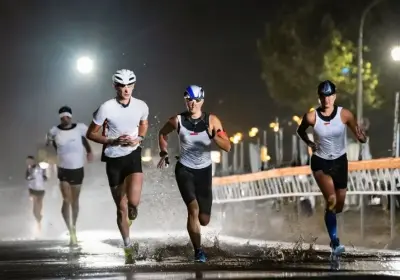







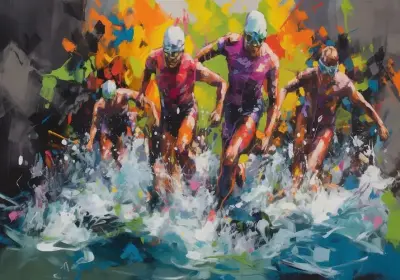

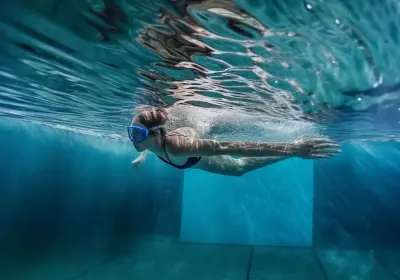

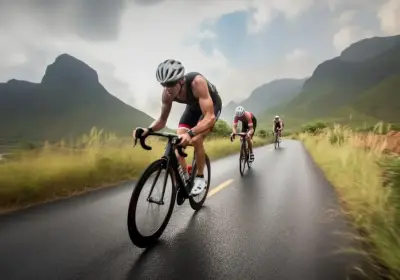






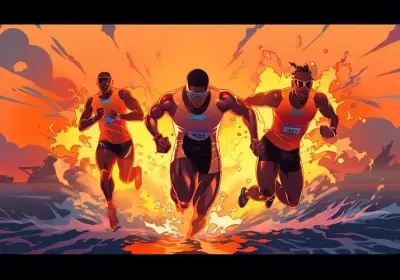


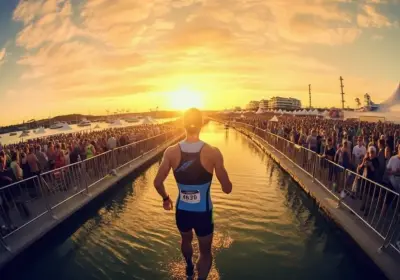










Leave a comment